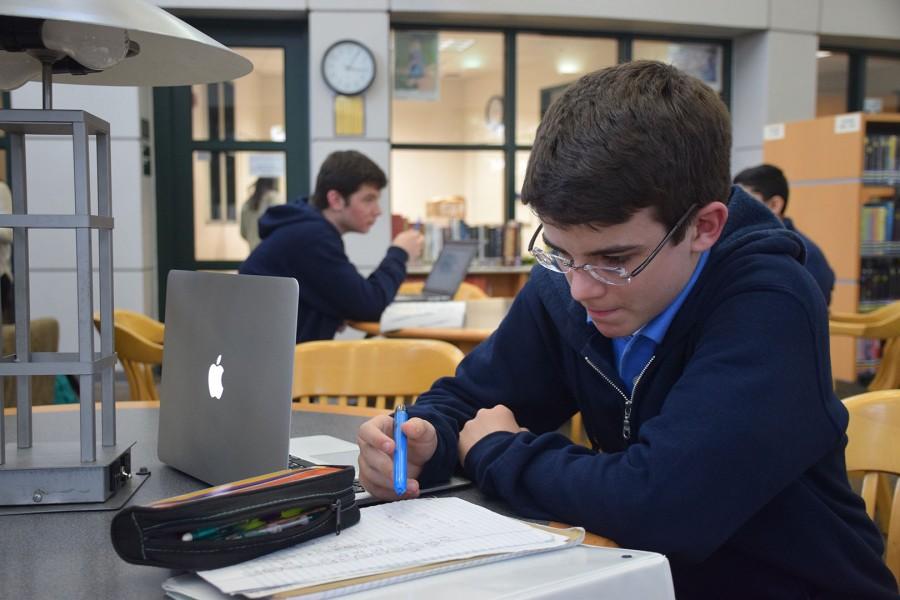On May 17, 1954, the Supreme Court ruled in Brown v. Board of Education that it is unconstitutional for schools to separate students by race. Now, 60 years later, has society finally resolved the issue of inequality and all of its variants in the classroom? No. And for teachers — the backbone of the education system itself — this problem has only grown worse.
Teachers are undoubtedly integral to the quality of learning throughout all schools. Their task: education and inspiration. For students, the latter soars higher than it already is when their teacher matches their own identity.
It is only logical that the diversity of teachers — both in terms of race and gender — should parallel the growing diversity of students.
“Teenagers need role models who look like them, who represent different parts of their identities because that’s how we figure out who we are,” said Dr. Gretchen Brion-Meisels, Harvard’s Graduate School of Education’s Senior Lecturer on Education and expert on Diversity for Equity & Inclusion (DEI) in education.
Racial and Gender Disparity
Unfortunately, the majority of schools have been unsuccessful in making any positive changes towards teacher diversity.
According to Education Week’s teacher diversity demographics from November 2023, a mere 35.2% of Florida K-12 public school teachers are persons of color. This statistic is compared to the 63.9% of Floridian students who are also non-white, a major discrepancy of racial diversity on all campuses.
A lack of diversity among teachers is not exclusive to race alone. According to the National Center for Education Statistics, around 77% of all teachers are women, while 23% are men. Brion-Meisles explains that the cause of this imbalance is the societal expectations of men and the stereotypical archetype of teachers.
“It’s a profession that has been relegated to a female profession … and it’s easier to assume that they’re going to have to take care of people and nurture people,” Brion-Meisels said. “We’ve made this profession seem feminine, and so it’s less likely for men to go into it.”
Causes of Inequality
There is no one all-encompassing reason for the status-quo disparity among teachers, but there are many small factors that multiply into our current crisis. One cause, as Brion-Meisels outlines, is the racism and classism that have afflicted marginalized communities for the past 300 years. Socioeconomic disparities caused by slavery, such as a lack of generational wealth, have trickled down to many Black people in the 21st century. For Americans with fewer fiscal resources than their average white counterparts, it becomes increasingly difficult to even obtain a degree and license in teaching to begin with.
A degree in teaching from the University of Florida’s College of Education currently costs $26,424, which for many, leads to years, if not decades, of student loan debt. For others, that number is so great they are altogether steered away from the profession. Dr. Amber Johnson, Assistant Vice Chancellor and Chief of Staff in the DEI at University of California, Berkeley, explains that out of all of the jobs similar to teaching that require degrees and certifications, teachers are some of the lowest paid.
Fiscal challenges may not apply to every person who struggles to become a teacher, but one determinant that is almost ubiquitous to people of color is poor experiences as students themselves. It makes sense. If school is a place where a person was bullied, discriminated against or outcast, they will be less inclined to view school positively and want to return as a teacher.
“I would say, on average, probably people who have marginalized identities … are going to have more challenging experiences in schools than people who have all dominant identities,” Brion-Meisels said. “And so I could understand why, for some folks, they might not want to go back to school, because school feels oppressive or restrictive in a way that feels harmful.”
Significance for Students
Having more teachers of color benefits every student in the classroom. People of different heritages, upbringings and races can provide unique perspectives to subjects. Being surrounded by people different from us improves the quality of our learning and the caliber of our work.
According to Education Northwest, a non-profit organization for education, research studies show that with diverse teachers, students have improved problem-solving, critical thinking and creativity.
Still, in the cases of many people, diversity is not always essential to an environment conducive to learning. AP World History teacher Isiah Cabal grew up being surrounded by a lack of diversity among teachers, which he said didn’t impact his love of learning.
“For me, a minority, I was just kind of used to having white teachers, so it was never something I thought about [be]cause it was almost a given that was going to be my experience,” Cabal said. “It was just pretty much my experience growing up.”
Solutions across Levels
Fortunately, there are solutions to improving teacher diversity in schools. Brion-Meisels explains that similar to K-12, higher education has also faced serious problems with a lack of diversity. Though non-discrimination laws stop colleges like Harvard from hiring teachers based on qualities such as race alone, there are ways for these colleges to improve diversity. Specifically, Harvard has a myriad of courses they have installed such as the Disability Rights Laws course. Classes like these not only educate students on diverse and important topics, but they are subjects that tend to attract people of different backgrounds. This method works to draw a diverse set of applicants instead of trying to find a candidate among a pile of resumes.
High schools can follow similar measures to improve their diversification as well. One great example would be AP African American Studies. Instituting new courses like this provides innumerable benefits. While this class was banned by Governor Ron DeSantis back in 2023, that ruling only applied to public schools, so private schools are free to offer the course.
This solution isn’t just a pipe dream. According to the Director of Learning and Instruction and Interim Head of Middle School Dr. Stephanie Dryden, there are current discussions of offering additional electives and optional courses following the reduction in their minimum required social sciences credits. While the process of adding a new course can take anywhere from one to two years, there is a possibility that AP African American Studies could set foot on Trinity grounds.
“So there’s some flexibility there as part of [the social science credit] change, we are starting to think about what are some additional social science courses that we might be able to offer,” Dryden said. “We’re in the process of thinking about what we want to do. There are pros and cons of doing AP anything and we have to think through that.”
Johnson believes that a course offering like this is a strong first step in taking progressive action. But just like any first step, there must be more to come. For any institution looking to improve teacher diversity on campus, Johnson recommends that schools address this issue via a top-down approach, starting at the administrative level.
“I think your board of trustees or your region’s board of directors, your principal, your administrators, they have to be committed,” Johnson said. “They have to show that when you come here, you are going to be valued, respected and listened to, [and] that we’re going to implement your ideas to make this place better … What attracts them is important, and what keeps them there is more important.”
Diversity in the Quad
Junior Leticia Feliciano Seda, a Puerto Rican student, finds it important to have teachers who match her own identity. This rang true to her own personal experience when she was a freshman at Lake Nona High School.
“My ninth grade English teacher was Puerto Rican and I remember [that] I never had a Puerto Rican teacher at all [beforehand],” Seda said. “I thought that made me want to learn more about her class and made me more interested in learning. [It] made me have a higher connection with the teacher and with the class.”
Diversity facilitates inclusion. Inclusion ensures justice. But it is painfully clear that our society could do more to create a safe haven for diversity in the classroom.
“If we don’t allow young people to learn about themselves and their own histories, then we are robbing them of understanding their identities,” Brion-Meisels said. “If you don’t know your history, you can’t know yourself.”











